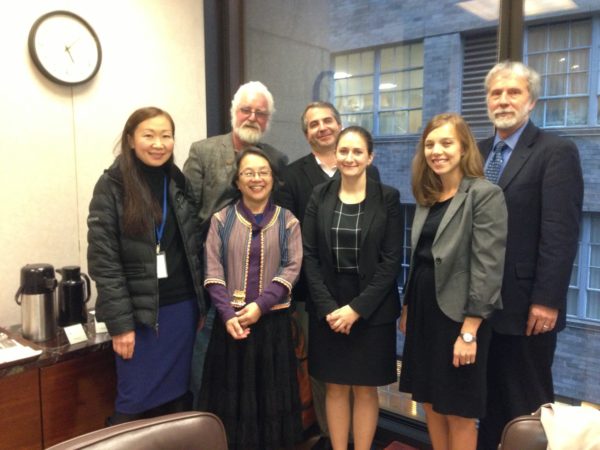

Steven Heim is a Managing Director at Boston Common Asset Management, an investment firm that targets global impact initiatives in pursuit of, both financial return and social change. Over the years, Steven has engaged in dialogues at IFIP global conferences on the intersection of corporate accountability and Indigenous Peoples rights. Since 2007, he has served as the Chair of the Advocacy Subcommittee of the Investors and Indigenous Peoples Working Group. He also serves on the board of Cultural Survival as the vice chair.
This article is based on a Q&A with Steven Heim of Boston Common Asset Management.
Two basic lessons: “Know what you own. Are there companies in your portfolios that harm Indigenous Peoples directly or indirectly?” and “Seek direction from Indigenous Peoples themselves.”
What sparked your interest in Indigenous Peoples rights? What do you do in this area in addition to Boston Common Asset Management?
I think my interest started from living in Brazil as a young child when my parents were missionaries in Bahia. It was part of the culture. I then grew up mostly In Central California. My grandfather told me when I was young that he thought I had a great, great, great American Indian grandmother from the 1830s in Missouri. Until about 10 years ago, I thought I was 1/32 Native American Indian. But my uncle, the family historian, said no, which was based on his research after my grandfather passed away. Skipping ahead, since 2013 I’ve served on the Board of Cultural Survival and was Treasurer and now Vice Chair. For several years running I’ve also attended the UN Permanent Forum on Indigenous Issues in New York.
What were your first investor engagements on Indigenous Peoples and their outcomes?
The first was in 1998 with Applebee’s on racist imagery in its restaurants that displayed wooden Indian statues, so-called “cigar store Indians”. After protests by American Indian Movement activists and our small engagement, Applebee’s removed the statues from store décor packages for company owned restaurants, but not franchisee owned. Next was with the Spanish oil and gas company Repsol that started in 2000 and continued to today about Indigenous Peoples rights in Latin America. Results took much longer. In 2008, Repsol adopted its Indigenous Communities policy, the first in Latin America it said. It took six more years working with Norwegian investor Storebrand for Repsol to exit Block 39 in the Peruvian Amazon where Indigenous Peoples lived, threatened by oil exploration.
What are other examples?
Last year Boston Common helped lead investor engagement with the 17 banks that financed the Dakota Access Pipeline (DAPL), supported by over 160 investors with over $1.7 trillion assets under management (AUM). Global banks ING, DNB and BNP Paribas pulled out of DAPL. We later helped organize investors engaging the Equator Principles Association, this time backed by over $2.6 trillion AUM or advisement. This initiative combined with NGO pressure led the global association of over 90 banks to commit to revise its project risk policies on Indigenous Peoples rights. We believe the policies failed its 13 member banks of the 17 that financed DAPL.
Next, examples involving policy makers and multinational agencies: in 2010, we led investors that urged the US to endorse the United Nations Declaration on the Rights of Indigenous Peoples. In 2015, we led investors that asked the World Bank to improve its lending policies on Indigenous Peoples that resulted in some improvements. These and many more examples show how investors working together can press corporations and policy makers to respect Indigenous Peoples rights, may help reduce risks and also support indirectly Native nation building. These actions may parallel and accelerate actions by Native peoples, civil society, industry organizations and governments.

Steven with the co-chairs of the Investors & Indigenous Peoples Working Group, Susan White, Trust Director of Oneida Nation of Wisconsin and Jan Bryan, First Affirmative Financial Network
